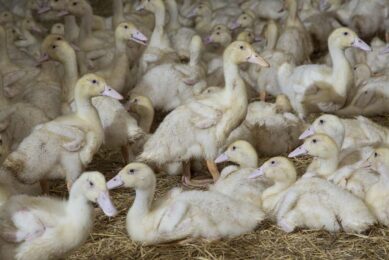Thailand finds H5N1 in wild birds
Four pigeons were among a group of wild birds that died last month in the central province of Suphan Buri.
Tests confirmed they had the H5N1 strain of avian influenza, said Thawat Suntrajarn, the Health Ministry’s director general of disease control.
“We have asked all related officials to closely monitor the death of poultry and birds,” Thawat said. “Any people that have flu-like symptoms with a history of contacting poultry will be quarantined.”
“We have asked all related officials to closely monitor the death of poultry and birds,” Thawat said. “Any people that have flu-like symptoms with a history of contacting poultry will be quarantined.”
Indonesian Cases
In Indonesia, the virus is reported to have killed 61 people since mid-2005, including at least three this year.
In Indonesia, the virus is reported to have killed 61 people since mid-2005, including at least three this year.
Test results showed at least 10 patients hospitalized for suspected H5N1 were negative for the virus, said Muhammad Nadirin, an official at the Indonesian Health Ministry‘s avian flu information centre. An 18-year-old man, whose 37-year-old mother died this week of H5N1, remains in hospital in critical condition, the WHO said in a statement on its Web site yesterday. The man’s father, who also showed flu-like symptoms, tested negative for the virus. The family is from Tangerang city in Banten Province.
“Investigations into the source of his infection indicate similar environmental exposure as his mother,” the United Nations health agency said. Almost all human H5N1 cases have been linked to close contact with sick or dead birds, such as children playing with them or adults butchering them or plucking feathers. There is little evidence linking human cases with contact with wild birds, said Denis Hoffmann, a technical adviser on avian flu with the UN’s Food and Agriculture Organization in Bangkok.
Infections in birds and people seem to be on the increase, particularly in Asia, where the virus was first identified a decade ago.
Join 31,000+ subscribers
Subscribe to our newsletter to stay updated about all the need-to-know content in the poultry sector, three times a week. Beheer
Beheer








 WP Admin
WP Admin  Bewerk bericht
Bewerk bericht